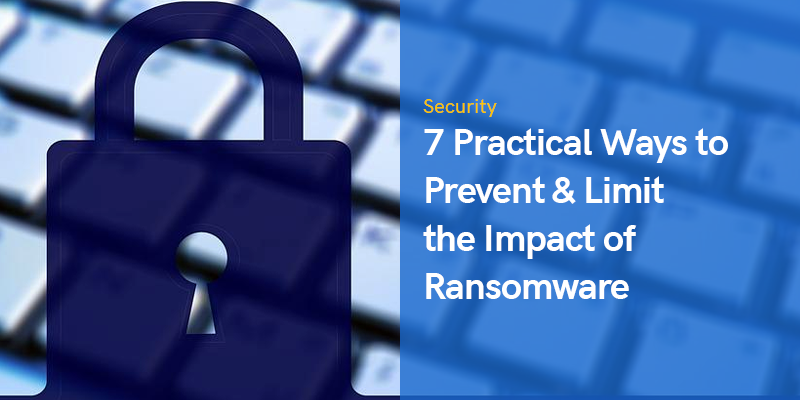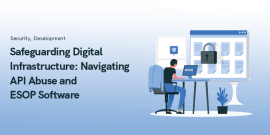
7 Practical Ways to Prevent & Limit the Impact of Ransomware
All forms of cyberattacks are harmful, but ransomware attacks are arguably one of the most dangerous types.
When you unwittingly download ransomware, which is a form of malware, your data becomes scrambled or deleted and you are asked to pay a ransom in order to restore it.
So, do not overlook how important it is to take steps to help prevent and limit the impact of ransomware.
Practical Techniques to Help Prevent & Limit the Impact of Ransomware
Here are seven practical techniques you should consider implementing.
Regularly Back Up Your Data
The single most important way of limiting the impact of ransomware is to remember to always back up your data. However, you need to back up your data in the right way.
You should store your files offline or out-of-band so that attackers cannot target them. Also, make sure you regularly test your backups for efficacy.
And if you do face an attack, verify your backup files are not infected before you roll back to previous versions.
Ensure Your Systems Are Up-to-date
You not only need to consider the data. You also need to ensure all of your operating systems, applications, and software are routinely updated.
By ensuring all of the latest updates are applied, you can ensure the security gaps that attackers look to exploit are closed.
Get into a habit of turning on auto-updates so that you will automatically have the latest security.
Use Robust Endpoint Antivirus Security
Antivirus security is an excellent tool for preventing ransomware attacks from occurring, but make sure that you have a robust endpoint security solution.
When the best security is installed on your endpoint devices, any malware can be blocked from infecting your systems.
Utilize an Intrusion Detection System
Another practical technique for limiting the impact of ransomware is to use an intrusion detection system.
An IDS searches for malicious activity by comparing the network traffic logs with the signatures that detect malicious activity.
With a strong IDS, your signatures will be updated and quickly alert you when potential malicious activity is detected.
Enhance Your Email Security
One of the most common ways in which ransomware is unwittingly downloaded is via email, so having a robust email security system in place with the right DMARC policy instilled is crucial if you want to help prevent and limit ransomware’s impact
When you use secure email gateway technologies to filter email communications with attachment sandboxing and URL defenses to identify threats, those risks can be blocked from being delivered to end-users.
That means the ransomware can be stopped from arriving on endpoint devices and inadvertently being installed on your devices.
You can also utilize post-delivery protection technologies that use artificial intelligence algorithms and machine learning to detect phishing attacks and alert you when there is any potential malicious activity.
Employ Web Filtering and Isolation Technologies
When you employ Domain Name System web filtering, you can ensure you do not visit dangerous websites and download malicious content. In turn, you can prevent viruses from spreading ransomware.
DNS filters can block malicious third-party ads too.
When using web filters, make sure they are configured correctly.
Using utilizing-isolation can also help to prevent ransomware downloads. They remove threats by isolating browsing activity in secure servers without affecting your user experience at all.
Learn More with an Awareness Training Program
Lastly, regardless of your level of cybersecurity awareness, it is a good idea to undertake awareness training.
With a designated course, you can learn what threats look like and the best practices you should follow to prevent ransomware attacks from happening.
Recommended Posts

5 Ways to Customize WordPress Password Protected Pages
December 11, 2022

